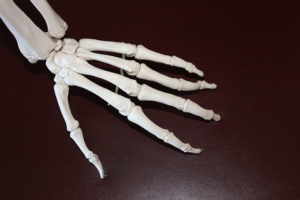Pauciarticular juvenile rheumatoid arthritis: What to know – Medical News Today
Pauciarticular juvenile rheumatoid arthritis (PJRA) is a form of arthritis that affects children and adolescents. The pauciarticular in PJRA means that it involves fewer than five joints.
PJRA is a previous term used for this condition, which is now known as oligoarticul…….

Pauciarticular juvenile rheumatoid arthritis (PJRA) is a form of arthritis that affects children and adolescents. The pauciarticular in PJRA means that it involves fewer than five joints.
PJRA is a previous term used for this condition, which is now known as oligoarticular juvenile idiopathic arthritis (oligoarticular JIA). It is one of several subtypes of JIA.
The term juvenile rheumatoid arthritis is no longer widely used by healthcare professionals. This is because most forms of juvenile arthritis are different from adult rheumatoid arthritis. Oligoarticular JIA is also known as oligoarthritis.
Oligoarticular JIA causes the child’s immune system to attack the tissue lining of their joints, called the synovium. This causes inflammation, making the joint tender, painful, or hard to move.
Read on to learn more about oligoarticular JIA, including its symptoms, causes, and treatments.
The word oligoarticular means “few joints”. A child with oligoarticular JIA will have up to four joints affected. The American Academy of Orthopaedic Surgeons (AAOS) notes that around 50% of children with juvenile idiopathic arthritis (JIA) have the oligoarticular form.
Oligoarticular JIA mainly affects a child’s lower limbs, such as the knee or ankle. Common symptoms of JIA include:
- joint pain and stiffness, which may increase after waking up or being in the same position for too long
- red, tender, warm, or swollen joints
- fatigue
- rash
- appetite loss
- fever
- blurred vision
- dry, gritty eyes
The AAOS states that approximately half of children with oligoarticular JIA experience symptoms in only one joint. Experts call this form of JIA monoarticular juvenile arthritis. A child with monoarticular juvenile arthritis may have mild symptoms that reduce or disappear altogether.
Oligoarticular JIA can also affect a child’s eyes. Around 20–30% of children with oligoarticular JIA also develop eye inflammation, called uveitis. This affects the inner layer of the eye, causing blurry vision and eye pain.
If a child with oligoarticular JIA experiences vision problems, they may require regular checkups with an ophthalmologist, a doctor specializing in eye care. If a child is antinuclear antibody (ANA) positive, they are evaluated every several months. Without regular checkups, a child with uveitis may develop a permanent visual impairment or even go blind.
Oligoarticular JIA occurs when a child’s immune system attacks the synovium of their joints. However, experts currently do not know the exact cause of oligoarticular JIA.
Specialists suggest …….
Source: https://www.medicalnewstoday.com/articles/pauciarticular-juvenile-rheumatoid-arthritis







